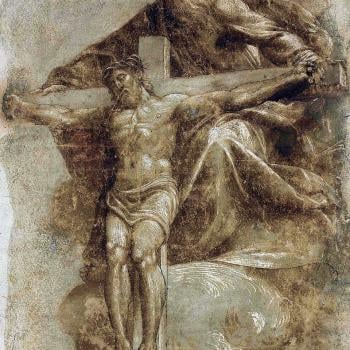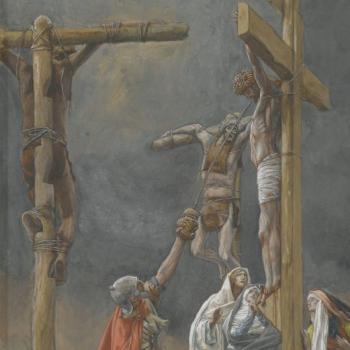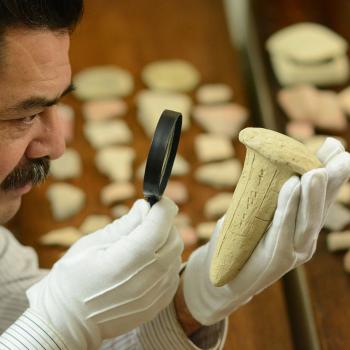
It is so easy to get caught up in the moment as Jesus works his glorious wonders in our midst and we fail to see his hour of glory. Take for example Jesus’ miraculous turning of water into wine at the wedding in Cana in Galilee discussed in the last entry. Even though his hour has not yet come (John 2:4), Jesus is the life of the party as he saves the wedding day, and possibly the marriage.
As great as Jesus’ concern for the sanctify of marriage is, the gospel writer may have been foreshadowing the wedding supper of the lamb with such imagery as the use of six stone water jars (for the Jewish custom of purification) and Jesus saving his best for last (See John 2:1-12).[1] John’s Gospel often uses physical realities to speak of deeper spiritual realities, as with light and darkness, bread and water, and even Herod’s temple and the temple of Jesus’ body.
This latter illustration takes us to the following story in John 2, where Jesus moves from being the life of the party to crashing the party in the temple: casting out the merchants and money-changers and overturning their tables (John 2:13-22; ESV). Note that all this took place at the Passover Feast. Just as Jesus cherished the sanctity of marriage, he was zealous for the honor of his Father’s house (John 2:16-17). Instead of repentance and reverence, there is the clamor of commerce.[2] Jesus attacks the entire financial institution and big business surrounding the temple system in his day.[3] Astonishingly to his hearers and readers, Jesus offers himself as the very personal means of salvation (apart from the designated temple complex structures), as the destruction and resurrection of his body is the sign of his authority to overturn the tables and challenge the religious and political temple establishment.[4] Epiphany-tide looks forward through the turning of water into wine and turning over the tables of the money changers to the hour of glory when Jesus destroys his body and raises it up again for the salvation of the world:
So the Jews said to him, “What sign do you show us for doing these things?” Jesus answered them, “Destroy this temple, and in three days I will raise it up.” The Jews then said, “It has taken forty-six years to build this temple, and will you raise it up in three days?” But he was speaking about the temple of his body. When therefore he was raised from the dead, his disciples remembered that he had said this, and they believed the Scripture and the word that Jesus had spoken (John 2:18-22; ESV).
Is Jesus the life of the party or party crasher? Actually, he’s both. But why? Not so that we would fixate on the miraculous signs, but as his Father would have it, that we would focus on Jesus himself: who is he? Who is this person who turns water into wine and who has the zeal and authority to overturn the temple tables and disrupt the polluted commerce?
As we journey through Epiphany-tide toward Lent, may we remember that while Jesus honors weddings and saves marriages, and while he demonstrates amazing authority and power at key moments in our lives, his ultimate aim is to draw us to his Father through himself. So let us not focus solely on the signs of his grace, goodness, and glory in our midst as the life of the party and party crasher, but look forward to the cross and resurrection and to the marriage supper of the Lamb (Revelation 19).
_______________
[1]See Raymond E. Brown’s treatment of messianic fulfillment and the messianic banquet in Brown, The Gospel According to John (XIII-XXI): Introduction, Translation, and Notes, The Anchor Bible 29 (New York: Doubleday, 1970), pages 104-105. See also Leon Morris for his critical analysis of the perspective that imperfection is conveyed by the number six (as in six ceremonial water jars), suggesting that Judaism is in some manner imperfect and foreshadowing Jesus (Morris, The Gospel According to John, rev. ed., The New International Commentary on the New Testament (Grand Rapids: Eerdmans, 1995), pages 160-161.
[2]D.A. Carson, The Gospel According to John (Grand Rapids: Eerdmans, 1991), page 179.
[3]Richard Bauckham, Law and Religion: Essays on the Place of the Law in Israel and Early Christianity, ed. Barnabas Lindars (London: SPCK, 1988), page 88.
[4]See N. T. Wright’s chapter “The Challenge of the Symbols,” in The Challenge of Jesus (Downers Grove, Ill.: InterVarsity Press, 1999), pages 54-73.












